RBS 2012 Annual Report Download - page 160
Download and view the complete annual report
Please find page 160 of the 2012 RBS annual report below. You can navigate through the pages in the report by either clicking on the pages listed below, or by using the keyword search tool below to find specific information within the annual report.-
 1
1 -
 2
2 -
 3
3 -
 4
4 -
 5
5 -
 6
6 -
 7
7 -
 8
8 -
 9
9 -
 10
10 -
 11
11 -
 12
12 -
 13
13 -
 14
14 -
 15
15 -
 16
16 -
 17
17 -
 18
18 -
 19
19 -
 20
20 -
 21
21 -
 22
22 -
 23
23 -
 24
24 -
 25
25 -
 26
26 -
 27
27 -
 28
28 -
 29
29 -
 30
30 -
 31
31 -
 32
32 -
 33
33 -
 34
34 -
 35
35 -
 36
36 -
 37
37 -
 38
38 -
 39
39 -
 40
40 -
 41
41 -
 42
42 -
 43
43 -
 44
44 -
 45
45 -
 46
46 -
 47
47 -
 48
48 -
 49
49 -
 50
50 -
 51
51 -
 52
52 -
 53
53 -
 54
54 -
 55
55 -
 56
56 -
 57
57 -
 58
58 -
 59
59 -
 60
60 -
 61
61 -
 62
62 -
 63
63 -
 64
64 -
 65
65 -
 66
66 -
 67
67 -
 68
68 -
 69
69 -
 70
70 -
 71
71 -
 72
72 -
 73
73 -
 74
74 -
 75
75 -
 76
76 -
 77
77 -
 78
78 -
 79
79 -
 80
80 -
 81
81 -
 82
82 -
 83
83 -
 84
84 -
 85
85 -
 86
86 -
 87
87 -
 88
88 -
 89
89 -
 90
90 -
 91
91 -
 92
92 -
 93
93 -
 94
94 -
 95
95 -
 96
96 -
 97
97 -
 98
98 -
 99
99 -
 100
100 -
 101
101 -
 102
102 -
 103
103 -
 104
104 -
 105
105 -
 106
106 -
 107
107 -
 108
108 -
 109
109 -
 110
110 -
 111
111 -
 112
112 -
 113
113 -
 114
114 -
 115
115 -
 116
116 -
 117
117 -
 118
118 -
 119
119 -
 120
120 -
 121
121 -
 122
122 -
 123
123 -
 124
124 -
 125
125 -
 126
126 -
 127
127 -
 128
128 -
 129
129 -
 130
130 -
 131
131 -
 132
132 -
 133
133 -
 134
134 -
 135
135 -
 136
136 -
 137
137 -
 138
138 -
 139
139 -
 140
140 -
 141
141 -
 142
142 -
 143
143 -
 144
144 -
 145
145 -
 146
146 -
 147
147 -
 148
148 -
 149
149 -
 150
150 -
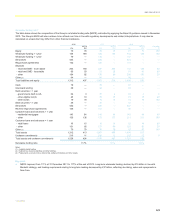 151
151 -
 152
152 -
 153
153 -
 154
154 -
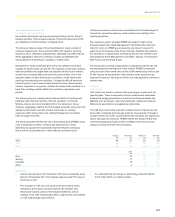 155
155 -
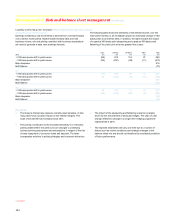 156
156 -
 157
157 -
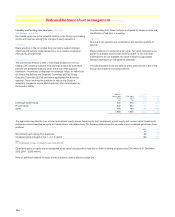 158
158 -
 159
159 -
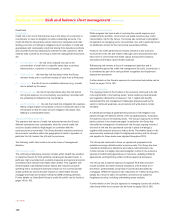 160
160 -
 161
161 -
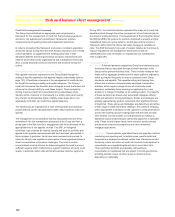 162
162 -
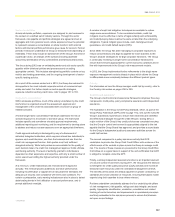 163
163 -
 164
164 -
 165
165 -
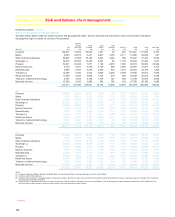 166
166 -
 167
167 -
 168
168 -
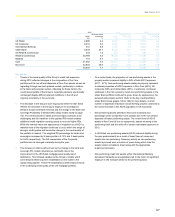 169
169 -
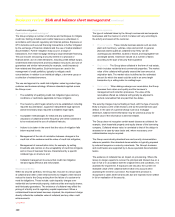 170
170 -
 171
171 -
 172
172 -
 173
173 -
 174
174 -
 175
175 -
 176
176 -
 177
177 -
 178
178 -
 179
179 -
 180
180 -
 181
181 -
 182
182 -
 183
183 -
 184
184 -
 185
185 -
 186
186 -
 187
187 -
 188
188 -
 189
189 -
 190
190 -
 191
191 -
 192
192 -
 193
193 -
 194
194 -
 195
195 -
 196
196 -
 197
197 -
 198
198 -
 199
199 -
 200
200 -
 201
201 -
 202
202 -
 203
203 -
 204
204 -
 205
205 -
 206
206 -
 207
207 -
 208
208 -
 209
209 -
 210
210 -
 211
211 -
 212
212 -
 213
213 -
 214
214 -
 215
215 -
 216
216 -
 217
217 -
 218
218 -
 219
219 -
 220
220 -
 221
221 -
 222
222 -
 223
223 -
 224
224 -
 225
225 -
 226
226 -
 227
227 -
 228
228 -
 229
229 -
 230
230 -
 231
231 -
 232
232 -
 233
233 -
 234
234 -
 235
235 -
 236
236 -
 237
237 -
 238
238 -
 239
239 -
 240
240 -
 241
241 -
 242
242 -
 243
243 -
 244
244 -
 245
245 -
 246
246 -
 247
247 -
 248
248 -
 249
249 -
 250
250 -
 251
251 -
 252
252 -
 253
253 -
 254
254 -
 255
255 -
 256
256 -
 257
257 -
 258
258 -
 259
259 -
 260
260 -
 261
261 -
 262
262 -
 263
263 -
 264
264 -
 265
265 -
 266
266 -
 267
267 -
 268
268 -
 269
269 -
 270
270 -
 271
271 -
 272
272 -
 273
273 -
 274
274 -
 275
275 -
 276
276 -
 277
277 -
 278
278 -
 279
279 -
 280
280 -
 281
281 -
 282
282 -
 283
283 -
 284
284 -
 285
285 -
 286
286 -
 287
287 -
 288
288 -
 289
289 -
 290
290 -
 291
291 -
 292
292 -
 293
293 -
 294
294 -
 295
295 -
 296
296 -
 297
297 -
 298
298 -
 299
299 -
 300
300 -
 301
301 -
 302
302 -
 303
303 -
 304
304 -
 305
305 -
 306
306 -
 307
307 -
 308
308 -
 309
309 -
 310
310 -
 311
311 -
 312
312 -
 313
313 -
 314
314 -
 315
315 -
 316
316 -
 317
317 -
 318
318 -
 319
319 -
 320
320 -
 321
321 -
 322
322 -
 323
323 -
 324
324 -
 325
325 -
 326
326 -
 327
327 -
 328
328 -
 329
329 -
 330
330 -
 331
331 -
 332
332 -
 333
333 -
 334
334 -
 335
335 -
 336
336 -
 337
337 -
 338
338 -
 339
339 -
 340
340 -
 341
341 -
 342
342 -
 343
343 -
 344
344 -
 345
345 -
 346
346 -
 347
347 -
 348
348 -
 349
349 -
 350
350 -
 351
351 -
 352
352 -
 353
353 -
 354
354 -
 355
355 -
 356
356 -
 357
357 -
 358
358 -
 359
359 -
 360
360 -
 361
361 -
 362
362 -
 363
363 -
 364
364 -
 365
365 -
 366
366 -
 367
367 -
 368
368 -
 369
369 -
 370
370 -
 371
371 -
 372
372 -
 373
373 -
 374
374 -
 375
375 -
 376
376 -
 377
377 -
 378
378 -
 379
379 -
 380
380 -
 381
381 -
 382
382 -
 383
383 -
 384
384 -
 385
385 -
 386
386 -
 387
387 -
 388
388 -
 389
389 -
 390
390 -
 391
391 -
 392
392 -
 393
393 -
 394
394 -
 395
395 -
 396
396 -
 397
397 -
 398
398 -
 399
399 -
 400
400 -
 401
401 -
 402
402 -
 403
403 -
 404
404 -
 405
405 -
 406
406 -
 407
407 -
 408
408 -
 409
409 -
 410
410 -
 411
411 -
 412
412 -
 413
413 -
 414
414 -
 415
415 -
 416
416 -
 417
417 -
 418
418 -
 419
419 -
 420
420 -
 421
421 -
 422
422 -
 423
423 -
 424
424 -
 425
425 -
 426
426 -
 427
427 -
 428
428 -
 429
429 -
 430
430 -
 431
431 -
 432
432 -
 433
433 -
 434
434 -
 435
435 -
 436
436 -
 437
437 -
 438
438 -
 439
439 -
 440
440 -
 441
441 -
 442
442 -
 443
443 -
 444
444 -
 445
445 -
 446
446 -
 447
447 -
 448
448 -
 449
449 -
 450
450 -
 451
451 -
 452
452 -
 453
453 -
 454
454 -
 455
455 -
 456
456 -
 457
457 -
 458
458 -
 459
459 -
 460
460 -
 461
461 -
 462
462 -
 463
463 -
 464
464 -
 465
465 -
 466
466 -
 467
467 -
 468
468 -
 469
469 -
 470
470 -
 471
471 -
 472
472 -
 473
473 -
 474
474 -
 475
475 -
 476
476 -
 477
477 -
 478
478 -
 479
479 -
 480
480 -
 481
481 -
 482
482 -
 483
483 -
 484
484 -
 485
485 -
 486
486 -
 487
487 -
 488
488 -
 489
489 -
 490
490 -
 491
491 -
 492
492 -
 493
493 -
 494
494 -
 495
495 -
 496
496 -
 497
497 -
 498
498 -
 499
499 -
 500
500 -
 501
501 -
 502
502 -
 503
503 -
 504
504 -
 505
505 -
 506
506 -
 507
507 -
 508
508 -
 509
509 -
 510
510 -
 511
511 -
 512
512 -
 513
513 -
 514
514 -
 515
515 -
 516
516 -
 517
517 -
 518
518 -
 519
519 -
 520
520 -
 521
521 -
 522
522 -
 523
523 -
 524
524 -
 525
525 -
 526
526 -
 527
527 -
 528
528 -
 529
529 -
 530
530 -
 531
531 -
 532
532 -
 533
533 -
 534
534 -
 535
535 -
 536
536 -
 537
537 -
 538
538 -
 539
539 -
 540
540 -
 541
541 -
 542
542 -
 543
543
 |
 |

158
Business review Risk and balance sheet management continued
Credit risk
Introduction
Credit risk is the risk of financial loss due to the failure of a customer or
counterparty to meet its obligation to settle outstanding amounts. The
credit risk that the Group faces arises mainly from wholesale and retail
lending, provision of contingent obligations (such as letters of credit and
guarantees) and counterparty credit risk arising from derivative contracts
and securities financing transactions entered into with customers. Other
material risks covered by the Group’s credit risk management framework
are:
x Concentration risk - the risk of an outsized loss due to the
concentration of credit risk to a specific asset class or product,
industry sector, customer or counterparty, or country.
x Settlement risk - the intra-day risk that arises when the Group
releases funds prior to confirmed receipt of value from a third party.
x Issuer risk - the risk of loss on a tradable instrument (e.g. a bond)
due to default by the issuer.
x Wrong way risk - the risk of loss that arises when the risk factors
driving the exposure to a counterparty are positively correlated with
the probability of default for that counterparty.
x Credit mitigation risk - the risk that credit risk mitigation (for example,
taking a legal charge over property to secure a customer loan) is not
enforceable or that the value of such mitigation decreases, thus
leading to unanticipated losses.
Top and emerging credit risks*
The quantum and nature of credit risk assumed across the Group’s
different businesses vary considerably, while the overall credit risk
outcome usually exhibits a high degree of correlation with the
macroeconomic environment. The Group therefore remains sensitive to
the economic conditions within the geographies in which it operates, in
particular the UK, Ireland, the US and the eurozone.
The following credit risks continue to be the focus of management
attention.
Irish property market
The continuing challenging economic climate within Ireland has resulted
in impairment levels for Irish portfolios remaining at elevated levels. In
particular, high unemployment, austerity measures and general economic
uncertainty have reduced real estate lease rentals. This, together with
limited liquidity, has depressed asset values and reduced consumer
spending with a consequent downward impact on the commercial real
estate portfolio as well as broader impacts on Ulster Bank Group’s
mortgage and small and medium enterprise (SME) lending portfolios.
Further details on Ulster Bank Group’s credit risk profile can be found on
pages 190 to 193.
Commercial real estate
While progress has been made in reducing the overall exposure and
rebalancing the portfolio, commercial real estate remains a key credit
concentration risk for the Group. The Group has continued to strengthen
its approach to managing sector concentration risk, with a particular focus
on additional controls for the commercial real estate portfolio.
However, the credit performance remains sensitive to the economic
environment in the UK and Ireland. Although some improvements have
been seen in commercial real estate values across prime locations,
secondary and tertiary values remain subdued.
Refinancing risk remains a focus of management attention and is
assessed throughout the credit risk management life cycle. In particular, it
is considered as part of the early problem recognition and impairment
assessment processes.
Further details on the Group’s exposure to commercial real estate can be
found on pages 181 to 185.
Eurozone troubles
The ongoing impact of the troubles in the eurozone continued to be felt
most significantly in the banking sector, where widening credit spreads
and regulatory demand for increases in Tier 1 capital and liquidity
exacerbated the risk management challenges already posed by the
sector’s continued weakness, as provisions and write-downs remain
elevated.
A material percentage of global banking activity in risk mitigation now
passes through the balance sheets of the top global players, increasing
the systemic risks to the banking sector. The Group’s exposures to these
banks continue to be closely managed. In particular, the Group has
intensified its management of settlement risk through ongoing review of
the level of risk and the operational controls in place to manage it,
together with proactive actions to reduce limits. The weaker banks in the
eurozone also remained subject to heightened scrutiny and the Group’s
risk appetite for these banks was adjusted throughout 2012.
The Group has continued to focus on operational preparations for
possible sovereign defaults and/or eurozone exits. The Group has also
considered initiatives to determine and reduce redenomination risk.
Further actions to mitigate risks and strengthen control in the eurozone
typically included taking guarantees or insurance, updating collateral
agreements, and tightening certain credit pre-approval processes.
The Group has a material exposure to Spanish AFS debt securities
issued by banks and other financial institutions of £4.8 billion at 31
December, predominately comprised of covered bonds backed by
mortgages. Whilst the exposure was reduced by £1.6 billion during 2012,
largely as a result of sales, the portfolio continues to be subject to
heightened scrutiny, including undertaking stress analysis.
Further details on the Group’s approach to managing country risk and the
risks faced within the eurozone can be found on pages 252 to 280.
*unaudited
